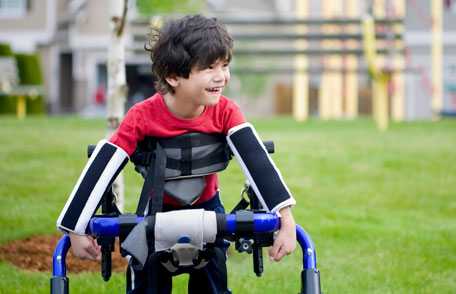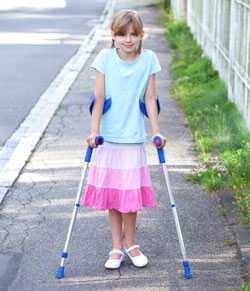11 Things to Know about Cerebral Palsy
 Cerebral palsy (CP) is the most common motor disability in childhood, and children with CP and their families need support. Learn more about CP and what signs to look for in young children.
Cerebral palsy (CP) is the most common motor disability in childhood, and children with CP and their families need support. Learn more about CP and what signs to look for in young children.
- Cerebral palsy (CP) is a group of disorders that affect a person’s ability to move and maintain balance and posture.
- CP is the most common motor disability of childhood. About 1 in 345 children have been identified with CP according to estimates from the Centers of Disease Control and Prevention’s (CDC’s).
- CP is more common among boys than girls, and more common among black children than among white children.
- Most (about 75%-85%) children with CP have spastic CP. This means that their muscles are stiff, and as a result, their movements can be awkward.
- Over half (about 50%-60%) of children with CP can walk independently.
-

About 1 in 10 children identified with CP walk using a hand-held mobility device.
Many children with CP have one or more additional conditions or diseases along with their CP, known as co-occurring conditions. For example, about 4 in 10 children with CP also have epilepsy and about 1 in 10 have autism spectrum disorder.
- Most CP is related to brain damage that happened before or during birth and it is called congenital CP. The following factors can increase the risk for congenital CP:
- Being born too small
- Being born too early
- Being born a twin or other multiple birth
- Being conceived by in vitro fertilization or other assisted reproductive technology
- Having a mother who had an infection during pregnancy
- Having kernicterus (a type of brain damage that can happen when severe newborn jaundice goes untreated)
- Having complications during birth
- A small percentage of CP is caused by brain damage that happens more than 28 days after birth. This is called acquired CP. The following factors can increase the risk for acquired CP:
- Having a brain infection, such as meningitis
- Suffering a serious head injury
- The specific cause of CP in most children is unknown.
- CP is typically diagnosed during the first or second year after birth. If a child’s symptoms are mild, it is sometimes difficult to make a diagnosis until the child is a few years older.
- With the appropriate services and support, children and adults with CP can stay well, active, and a part of the community. Read the stories of children, adults, and families living with CP.
Early Signs of CP
From birth to 5 years of age, a child should reach movement goals―also known as milestones―such as rolling over, sitting up, standing, and walking. A delay in reaching these movement milestones could be a sign of CP. It is important to note that some children without CP also might have some of these signs. The following are some other signs of possible CP.
In a baby 3 to 6 months of age:
- Head falls back when picked up while lying on back
- Feels stiff
- Feels floppy
- Seems to overextend back and neck when cradled in someone’s arms
- Legs get stiff and cross or scissor when picked up
In a baby older than 6 months of age:
- Doesn’t roll over in either direction
- Cannot bring hands together
- Has difficulty bringing hands to mouth
- Reaches out with only one hand while keeping the other fisted
In a baby older than 10 months of age:
- Crawls in a lopsided manner, pushing off with one hand and leg while dragging the opposite hand and leg
- Scoots around on buttocks or hops on knees, but does not crawl on all fours
More Information
More Information
- Page last reviewed: March 13, 2017
- Page last updated: March 13, 2017
- Content source:
- National Center on Birth Defects and Developmental Disabilities, Division of Birth Defects and Developmental Disabilities
- Page maintained by: Office of the Associate Director for Communication, Digital Media Branch, Division of Public Affairs




 ShareCompartir
ShareCompartir